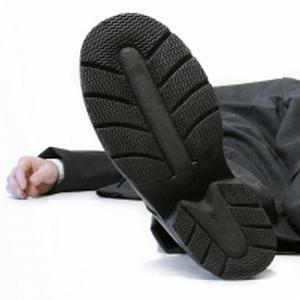
Mia felt fortunate to land a salaried job at the publishing firm for which she’d been freelancing from home. When she started getting headaches at work, she put it down to new-job stress – especially as the symptoms eased whenever she left the building.
Then her skin began getting dry and flushed at the office: “Like after a long plane flight,” says Mia.
She learnt that several other workers have also had troubling symptoms: one colleague, for instance, feels dizzy whenever she gets up after working at her desk. “And it’s common knowledge that if one person has flu, the whole floor gets it. But everyone puts up with this as though it’s 'all in a day’s work'.”
What is sick building syndrome?
This is the name given to the phenomenon when people who regularly occupy a building (like office workers) experience various troublesome symptoms, mainly when they spend time there. The symptoms tend to be flu- or allergy-like, and may include headaches, burning or itching eyes, stuffy nose, sneezing, coughing, sore throat, tight chest, dry or itchy skin, dizziness, difficulty concentrating, nausea and fatigue. People prone to asthma or allergies may find that their usual symptoms worsen while they're in the suspect building.
What causes it?
Sick building syndrome is controversial because it’s difficult to definitively link the wide range of symptoms people experience to a recognised illness, or to identify a specific cause. Nonetheless, there are some well-established prime suspects.
The syndrome is thought to be the result of poor indoor air quality, caused in turn by inadequate ventilation, faulty or poorly maintained air conditioning systems, and a wide array of indoor chemical pollutants. Indoor air pollution can occur in any building, but is particularly common in modern office blocks, which often have sealed windows and ventilation systems that re-circulate much of the interior air.
Most indoor air pollution comes from indoor sources. Individual pollutants may be present only at low levels, but the combined effect of numerous pollutants can be harmful. Many building materials and office supplies emit small amounts of toxins. Examples of common sources include: chemically treated wood, plywood and particle board in furniture and fittings; paint; glues; upholstery; curtains; carpets; aerosols; construction materials; cleaning agents; deodorisers and perfumes; photocopy machines, felt-tip pens and correction fluid.
Although there is much less smoking in public buildings nowadays, air contaminated with smoke can spread if it is not contained and if ventilation is poor. Secondhand smoke contains hundreds of toxic chemicals that can irritate eyes, nose and throat and cause headaches and nausea.
Air can also become contaminated with biological agents. Moulds and bacteria thrive in poorly maintained air conditioning systems or in dirty, damp patches, such as in bathrooms or around leaky pipes. When organisms grow in ventilation systems, they can spread throughout a building.
Polluted outdoor air may also enter a building and add to indoor pollution. For example, pollutants from motor vehicle traffic, from garages nearby or beneath the building, and from the building’s own exhaust vents, can enter through poorly located air intake vents and other openings. Carbon monoxide gas, a component of car exhaust, is one of the common pollutants that can seep into offices from outside. It can cause fatigue, headache, dizziness and nausea. If inhaled over long time periods, it may affect co-ordination and worsen heart problems.
Nursing a sick building back to health
Tracking down the source of a building’s malaise often involves serious detective work, and may require the services of a health and safety and/or air quality expert. However, the following simple measures should help relieve the problem, if not entirely neutralise the cause:
Ban tobacco smoke
Health authorities are working at tightening South Africa's anti-smoking laws,
proposing a total ban on indoor smoking and even making it illegal to smoke in
open spaces such as beaches. However, until such time as these laws come into
effect, campaign for a smoke-free building. (The
employer/owner is entitled to ban smoking completely on his building or in the
workplace if he wishes to.) Failing that, make sure your workplace complies
with the exact letter of the law: no more than 25% of the space can be
designated a smoking area. That area needs to be physically isolated from the
rest of the interior, i.e. it needs to be enclosed and the smoky air vented to
the exterior of the building.
Get air flowing
Air circulation in offices can be impeded by partitions. Try raising the base of these further off the floor, or occasionally moving their position. If you work in an older building without air conditioning, keep windows and doors open whenever possible, and use or enquire about installing ceiling fans. Standing fans also help to pull in fresh air from outside and keep it circulating.
Get out!
Try to get out of the office on your lunch breaks – preferably somewhere with good natural ventilation. Even a walk round the block should help; if your building is “sick”, chances are that the indoor pollution is worse than outside.
Meet your building manager
Find out who’s responsible for maintenance of the ventilation system – and when it was last checked. All ventilation, heating or cooling systems, including humidifiers, dehumidifiers and air filters, need to be regularly cleaned and adjusted. Also report any signs of damp or mould, and if the air feels excessively humid or dry.
Reduce potential indoor air pollution sources
If construction or renovation is planned in a section of your building, motivate to have this part left unoccupied for a few weeks (the longer the better), or at least for it to be thoroughly ventilated. This helps reduce exposure to any chemical pollutants from new building materials. Also ask if cleaning can be done at times of low building occupancy.
Olivia Rose-Innes, EnviroHealth, Health24
Any questions? Ask our EnviroHealth Expert or our Workplace Health Expert.




 Publications
Publications
 Partners
Partners













